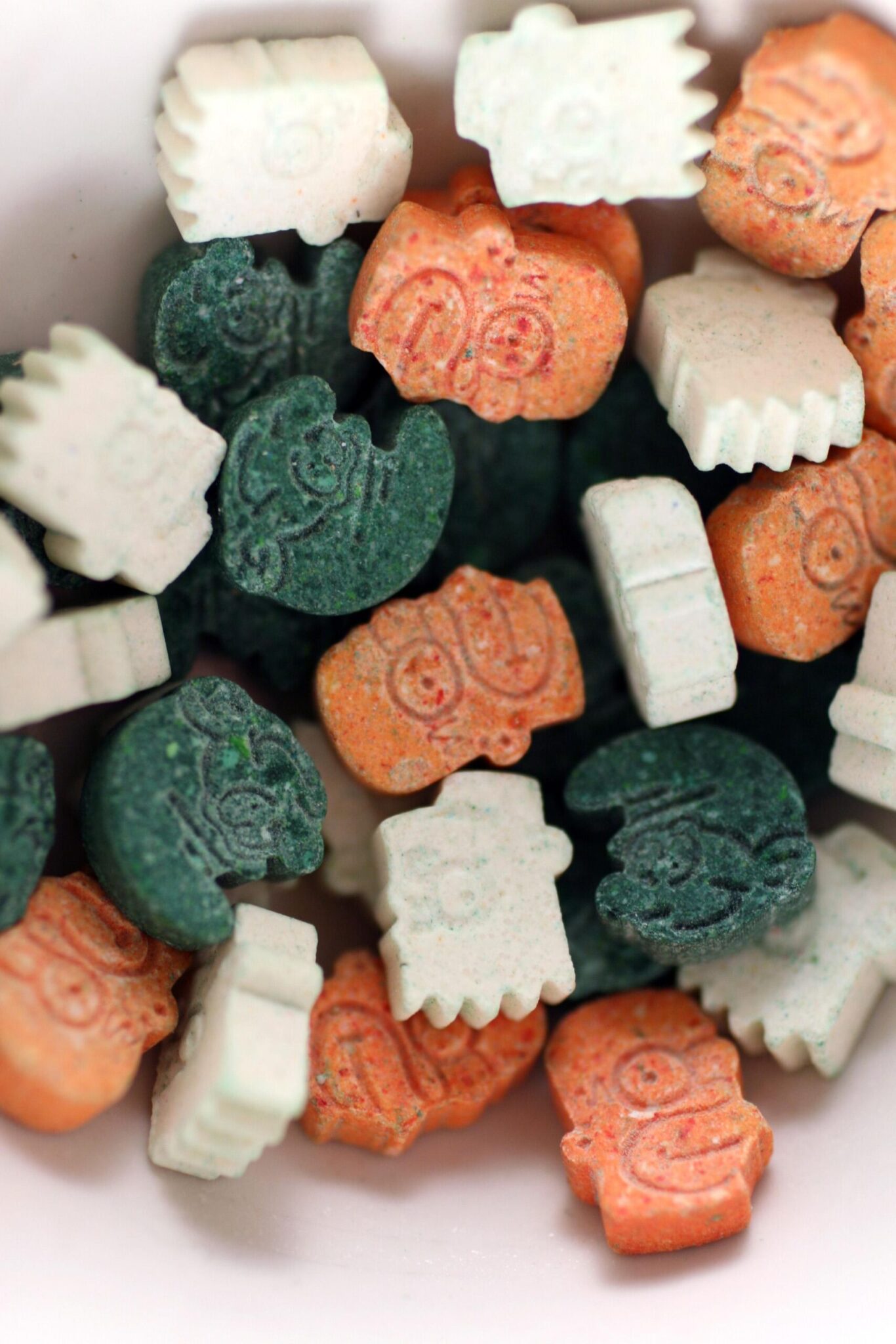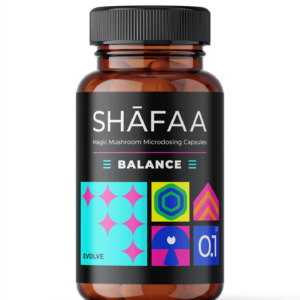Buy MDMA (Ecstasy Pills) Online
MDMA (Ecstasy Pills) is a synthetic drug that alters mood and perception, often producing feelings of euphoria, empathy, and emotional well-being. Short for 3,4-methylenedioxy-methamphetamine, MDMA is chemically similar to both stimulants and psychedelics. Under its influence, colors and sounds (especially music) are experienced more intensely, which has made it a popular recreational drug, particularly at raves and music festivals. Though it has a reputation as a club drug, MDMA’s ability to help people gain access to their emotions made it a popular drug to treat depression in the late 1970s, as well as in couples therapy to foster closeness. The psychologist and psychotherapist who first brought MDMA to the world of psychotherapy, Leo Zeff, reportedly called the drug “penicillin for the soul.” But after it became a popular recreational drug, the DEA added MDMA to the list of Schedule 1 drugs in 1985.
EXPERIENCES OF MDMA (Ecstasy Pills)
Many factors contribute to the MDMA experience, including dose, mindset, and setting. While there’s no way to predict exactly what will happen, following the Six S’s can help ensure you’ll have a positive experience with minimal negative effects.
What to expect
For most clinical trials, researchers administer doses between 80 and 150mg of MDMA. At this dose level, the onset of effects occurs approximately 20 to 60 minutes after taking the drug, and the characteristic effects (euphoria, increased empathy, and energy, enhanced sensations) typically last for three to five hours.
The high is usually characterized by a relaxed, euphoric state, including emotional openness, reduction of negative thoughts, and a decrease in inhibitions. MDMA can make users feel like all is well in the world, and connecting with others becomes easy. Bodily sensations and touch become enhanced, and sounds and colors can appear more intense.
These effects themselves could be important to the drug’s healing potential by offering users greater access to their inner selves. But researchers also believe that the openness MDMA fosters could speed up the bond between patient and therapist, creating a setting conducive to healing.
Pure MDMA
Your experience will also be affected by the quality of the MDMA you ingest. MDMA purity is notoriously variable, especially in tablet form. In the US, for instance, the average MDMA concentration in ecstasy tablets is reported to be 30.13%. But this includes samples as low as 0% and as high as 100%. Also, while the sample size varies (from 1 to 1,000 pills), individual state averages can be double or half the national average.
Still, this is an improvement: In 2008, police seizures of the chemical precursor safrole meant that, for years, street MDMA concentration in pills was often zero. Since then, the percentage of dud pills (tablets containing no MDMA) has been falling. Meanwhile, the percentage of ecstasy pills containing MDMA alone, without any adulterants, has been climbing. In 2009, 60.1% of ecstasy tablets worldwide contained no MDMA, whereas just 8.7% contained MDMA alone. By 2018, the situation was reversed: 8.8% of ecstasy tablets contained no MDMA, while 54.8% contained MDMA alone.
Part of this has to do with new manufacturing methods. Underground chemists now synthesize the drug with a less heavily restricted precursor. But it also has to do with the darknet, where vendor ratings and competition drive the quality up.
Far from the time when there was too little MDMA in pills, nowadays there’s often too much. Super-strength ecstasy tablets have made headlines in recent years for killing unsuspecting users. Where the MDMA content in ecstasy pills is traditionally between 80 and 120mg, some have been found to contain upwards of 300mg. A high-end dose like this can be dangerous enough in itself, let alone when you’re not expecting it.
Reagent test kits from Bunk Police in addition to the services provided by EcstasyData.org and Pill Reports are excellent resources for gauging pill safety. Short of testing the drug before consuming it, the safest way to use ecstasy pills is to start with half a tablet and gauge how you feel after an hour.
How is MDMA used?
MDMA is most often available in tablet or capsule form and is usually ingested by mouth. Ecstasy traffickers consistently use brand names, colors and logos as marketing tools and to distinguish their product from that of competitors. The logos may be produced to coincide with holidays or special events. Among the more popular logos are butterflies, lightning bolts, and four-leaf clovers.
How is MDMA used in medicine?
The DEA considers MDMA an illegal schedule I drug with no recognized medical uses.
Researchers are looking at MDMA use as a possible treatment for:
- post-traumatic stress disorder (PTSD)
- anxiety in terminally ill patients
- social anxiety in autistic adults
EFFECTS OF MDMA (Ecstasy Pills)
Pharmacology
MDMA affects the brain by increasing the activity levels of three neurotransmitters: dopamine, norepinephrine (noradrenaline), and serotonin.
Increases in dopamine are what create MDMA’s euphoric effects, as well as the increased energy users feel. Increases in norepinephrine/noradrenaline cause increased heart rate and blood pressure while increases in the serotonin system cause changes in mood, appetite, sexual arousal, and sleep cycles. Spikes in serotonin after taking MDMA likely account for the common feelings of emotional closeness and empathy.
Toxicology
Potentially fatal neurological complications can occur following MDMA ingestion, likely due to short-term hypertension and dehydration that the drug induces.
Many fatal cases are due to abnormally high doses, prior health complications, a “bad batch,” or a combination of all of these. In fatal cases, necrosis of the liver and heart tissue have also been reported. It’s often difficult to tell exactly how much of a role MDMA plays in adverse reactions because, in these cases, people are more likely to have used multiple drugs. As with any substance, MDMA should be used in moderation. Frequent use correlates with more complications than occasional use.
Clinical studies with pure MDMA have been conducted on more than 1,100 individuals without the occurrence of severe adverse effects.
EFFECTS BY DOSE
NOTE: Effects listed here aren’t meant to be comprehensive, particularly at the lower dose ranges. They may be subject to change as more reliable, more widely representative data become available. These dose ranges are intentionally conservative to account for the high variability of MDMA purity. They assume 100% (aka 84%) purity.
Microdose (5-40 mg)
Microdosing MDMA is not as common as LSD and psilocybin, but with the general rise in interest in microdosing, some have wondered if the practice could enhance their moods and boost their energy. While some people have reported success with an MDMA regimen, we do not recommend it. There is a lot of evidence to suggest that frequent MDMA use can be very bad for you. After all, MDMA is not like classic psychedelics; it’s an amphetamine and a stimulant that does very different things to your body than a tab of LSD. Common effects may include:
- Slight mood enhancement, if at all
- Emotional vulnerability (opened to emotional content without anxiolytic effect)
- Disrupted sleep
- Extended comedown or hangover
- Mood disorders can be negatively effected
- Potential for heart issues
Moderate (80-150 mg)
This is the most common dose for an MDMA experience and the dose used in clinical trials. In this range, users report the typical MDMA-associated sensations: euphoria, increased energy, empathy, etc. In this range, many people practice “re-upping,” which involves taking an initial 80-120mg dose, followed by an additional 40-80mg later on. This is the practice for MAPS’ clinical trials. Common effects may include:
- Strong euphoria
- Therapeutic introspection
- Heightened self-esteem
- Openness and self-forgiveness
- Heightened empathy and sociability
- Increased energy
- Enhanced tactile, visual and auditory senses
- Dry mouth
- Jaw clenching/grinding
- Insomnia
- Possible next-day comedown effects, e.g. fatigue, depression (can also be felt over the next seven days)
Heavy (200+ mg)
Even with tolerance, it may be unsafe to take more than 120mg of high-purity MDMA (or 1.5-1.7 mg/kg body weight, whichever is lowest). Positive effects appear to be maximized and negative effects are minimized between 81-100mg, ideally taken no more than once a month. Heavy doses of high-purity MDMA are potentially life-threatening, regardless of tolerance.
- Strong euphoria
- Therapeutic introspection
- Heightened self-esteem
- Openness and self-forgiveness
- Heightened empathy and sociability
- Increased energy
- Enhanced tactile, visual and auditory senses
- Possible open-eye visuals or hallucinations
- Agitation and paranoia
- Panic
- Dizziness
- Headaches
- Nausea and vomiting
- Shivering/trembling
- Dehydration
- Jaw clenching/grinding
- Insomnia
- Seizure
- Next-day comedown effects, e.g. fatigue, depression (can also be felt over the next seven days)





Camden –
Good quality.
Ryker –
Good quality.
Bryan –
Good quality.
Mateo –
Good quality.
Aadarsh –
Very well worth the money.
John –
Good quality.
Liam –
Good service.
Leo –
The product is firmly packed.
Liam –
Very fast delivery.
Matthew –
Good service.